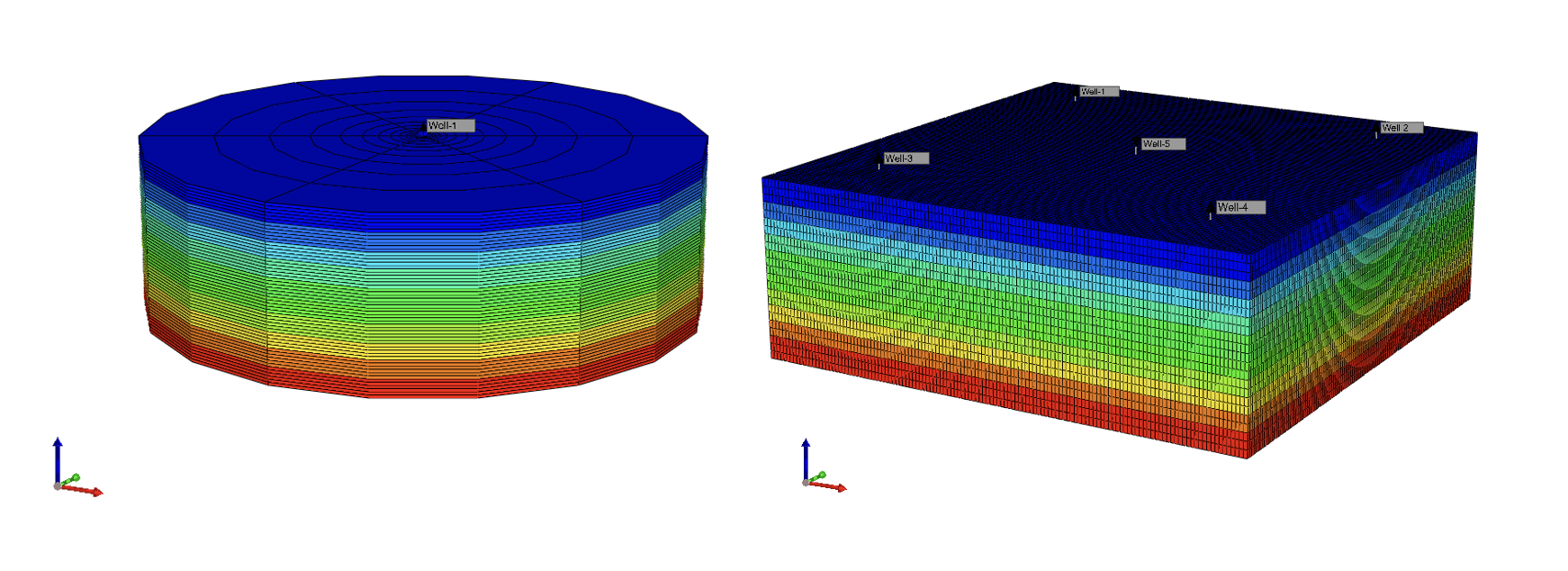
The process of incorporating any enhanced oil recovery technology involves both an experimental evaluation phase and numerical simulation. For steam injection, in-situ combustion, and chemical recovery technologies, physical models are applied in the laboratory to reproduce or estimate fluid-fluid and/or rock-fluid interaction during and after the application of the process. These results allow an approximation of the displacement efficiencies and the changes or effects on the fluids present in the porous medium. However, a large part of the results obtained at the laboratory scale cannot be scaled due to the heterogeneity of the properties of the reservoirs at the real scale, where trying to group all these variables in a physical model constitutes a great limitation.
The term computational simulation refers to the performance of experiments from a computer, involving the intersection of three research tools or approaches: modeling, system simulation, and the use of a computer. In this way, this branch of reservoir engineering constitutes a practical tool for reproducing the behavior of the reservoir or a part of it before a specific exploitation scheme, obtaining representative information for decisionmaking in the administration of a field. Running the simulation phase allows engineers to define or estimate operating and design parameters such as injection rates and pressures, chemical reagent concentrations, mass ratios, injection patterns, and well spacing. The costs of these analyzes are lower compared to the resources needed to evaluate each exploitation scenario on a pilot or commercial scale. The reservoir simulator involves the correlation of numerical, differential, and computational models. Based on the complexity of the phenomena that occurred in the reservoir, the results are based on the discretization of the variables and numerical solutions. Forthe construction of a representative simulation model of a field of interest, it is important to take into account the compilation and quality of the information described below:
- Static model: During this stage, the reservoir model is developed based on the integration of petrophysical, seismic, geological, and stratigraphic information. Additionally, the behavior of fluid properties with respect to pressure, volume, and temperature (PVT), and other parameters necessary for the initialization of the model, such as capillary pressures, saturations, and relative permeabilities, must be integrated; this information is generally obtained through electrical logs, laboratory tests, and core analysis.
- Dynamic model: Once the information is entered and the static model is built, the production and pressure behavior of the model is predicted both in terms of space and time. It should be analyzed whether the behavior obtained is consistent with the production mechanisms present in the reservoir since the dynamic model must constantly be adjusted by an integrated historical adjustment process, comparing the actual production with what the model manages to reproduce. This adjustment is done through control of rock properties, fluid properties, and well data.
The figure shows the temperature profile obtained for a continuous steam injection process. Additionally, according to the capacity of the software used, it is possible to visualize the behavior of saturations, fluid viscosities, among others. The interface and visualization of the tools available on the market is mostly simple and friendly.
Puedes descargar el artículo completo aquí


